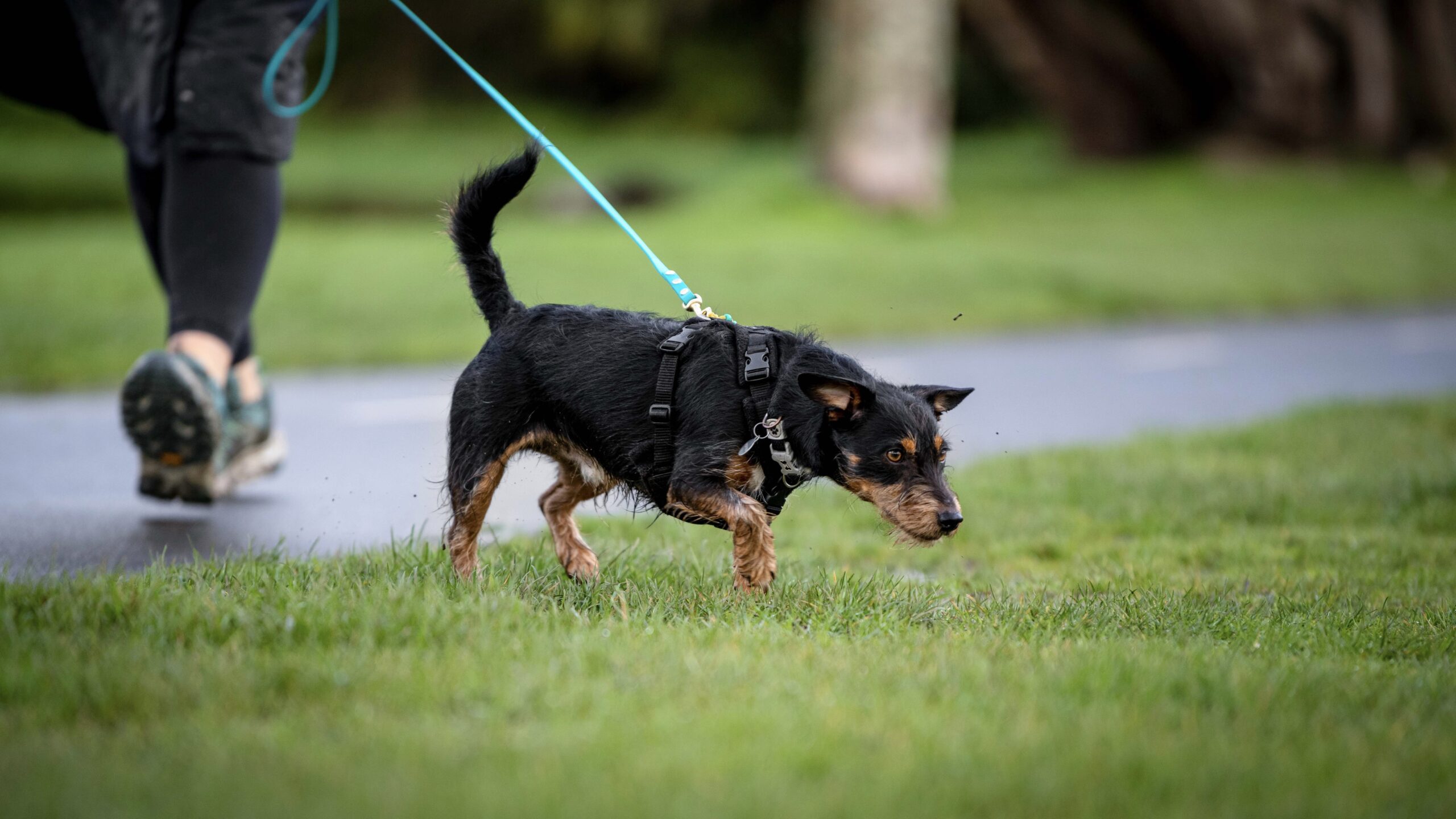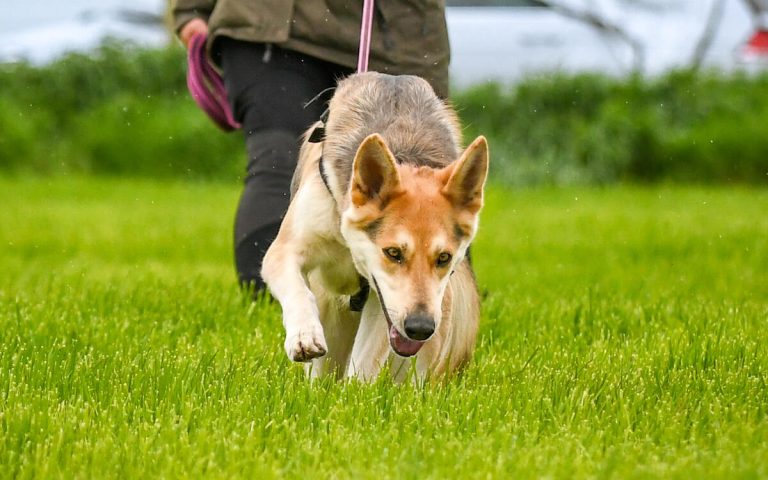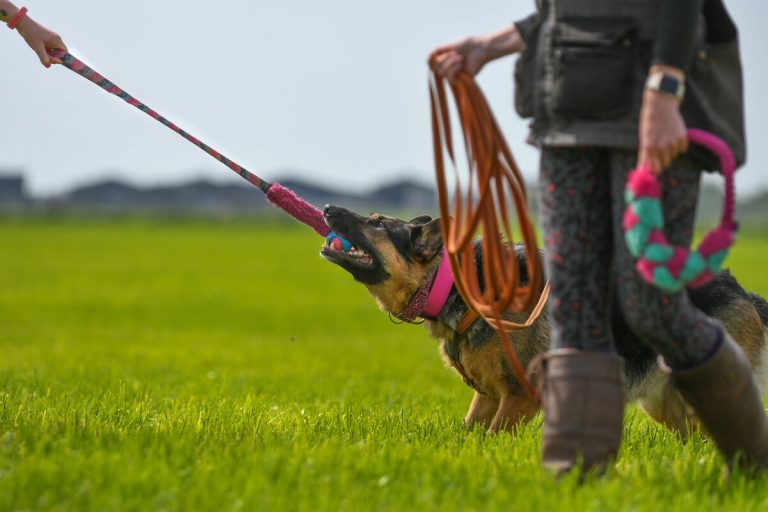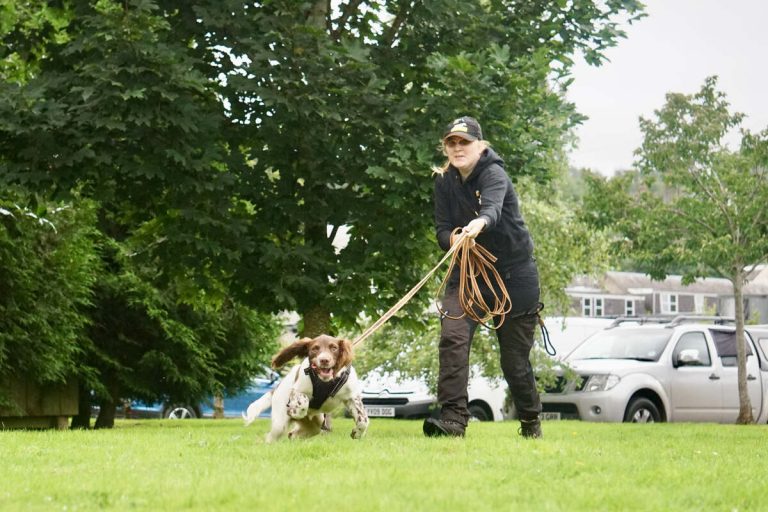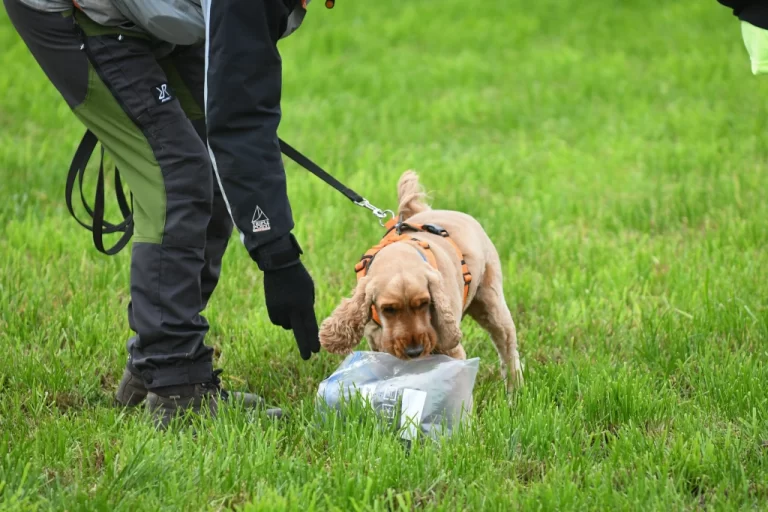Your Role as the Handler in Mantrailing
Why Focusing on Your Dog’s Behavior is Key to Successful Trail in Mantrailing.
Are you so focused on reaching the end of the trail that you overlook the important role of reading your dog’s behavior? Many handlers rush to the finish line, and want to get the reward as much as the dog, as they feel like their dog’s success is dictated by finding the person, rather than working out the problem.
This approach and mindset of rushing to the end of the trail can actually hinder your dog’s learning process and affect your teamwork.
In this blog, we’ll explore why it’s crucial to focus on the journey as a handler in mantrailing.
The Role of the Handler
As humans, we don’t rely much on our sense of smell. Sure, we might catch a whiff of a bag of chips from a distance, but we mainly use our eyes to navigate the world. Dogs, on the other hand, have an extraordinary sense of smell that far surpasses our own.
They can detect things we can’t even imagine. Dogs’ noses are so powerful that they can help detect narcotics, explosives, missing people, and even track criminals. Their sense of smell is why we use them in mantrailing.
When it comes to trailing, your dog is following scent molecules—mostly from bacteria on a person’s body. The challenge, then, is for you as the handler to support your dog in a way that lets them do what they do best.
Your Role as the Teacher in Mantrailing
In mantrailing, you work alongside an instructor to teach your dog how to follow a trail. The goal is to help your dog understand that their job is to find the hidden person, but many handlers rush through the process, reinforcing the dog’s urge to cut corners instead of focusing on the trail.
In other dog sports like agility and obedience, there is a focus on breaking down the learning steps into bite sized chunks and looking to build understanding of the dog. In mantrailing we tend to lean towards wanting to only know about where the trail layer is, rather than where the trail layer went, and it’s this mindset that hinders many handlers.
As a teacher, your responsibility is to foster your dog’s confidence in their natural scenting abilities, making the process of trailing fun and rewarding. The key is to build positive experiences right from the start. You’re not just teaching your dog what to do; you’re teaching them how to do it. This involves bite size steps toward that goal, and looking at how your dog learns.
Your instructor helps you understand the steps along the way, breaking down the exercises and guiding you as you work together to build your dog’s skills. Over time, you’ll learn to read your dog’s cues and offer guidance without over-managing them.
Teaching your dog the game is only half of the journey, becoming a team is the other half.
Timing is Crucial in Dog Training
Timing plays a huge role in mantrailing. Dogs learn by association, so when they make the right choices, you need to reward them at the right moment. If your dog only gets rewarded at the end of the trail, they might develop “superstitions,” like pulling to reach the reward.
Effective timing helps the dog understand what behavior is desired. Rewarding them for staying on trail or making correct choices encourages them to focus on the scent, not the destination.
You can do this via quick verbal reward when they make a correct decision such as coming away from a critter, or make a correct choice at a junction when they had a hard time working out the problem. It is ok to reward the dog on the trail, and it is something I encourage handers to do when the dog has had to work out a difficult problem unaided. For me I want the dogs to feel supported when making choices, like we would if the dog chose to sit by a curb or go in its bed un cued, we would reward this correct behaviour.
Your Role as the Handler in Mantrailing
Becoming an effective handler requires practice. The goal is to handle the leash in a way that doesn’t interfere with your dog’s natural instincts or distract them from the trail. This is where the real art of mantrailing comes in.
To become proficient in line handling, you’ll need to learn how to read your dog’s behavior—both on and off the trail. The better you know your dog, the easier it will be to support them in their work.
Practice makes perfect, and with time, you’ll become an expert in understanding their behaviour on the trail. By building a bank of knowledge of your dog’s behaviour on and off the trail will help you read them, and let them work in their individual way to solve the puzzle.
Top Tips for Handlers:
- Guide, don’t control: Your job is to guide your dog by reading their behavior and offering support when necessary. Avoid walking them down the trail—let them work it out. Remain passive and don’t rush to step in and offer support.
- Master line handling: Good line handling ensures your dog remains focused and confident, allowing them to trust their instincts while you stay calm and supportive.Selecting the right long line is important to help you build a smooth tension in the line.
- Know your dog: Becoming an expert in your dog’s behavior takes time and practice. But the better you understand them, the more successful your training will be.
- Work known trails: It can be tempting as a handler to jump ahead to working single blind trials (Where the handler doesn’t know where the trail layer is) instead of sticking to known trails (Where the handler does know where the trail layer is) for a good period of time in order to learn about your dogs behaviour.
- Work blind trails: Once you start to know your dog’s behaviour, you can start to work blind trails with an instructor who can support you. It is important that you have an instructor who can set up the right trails for you to work, so the dog has success and will step in when needed to help so the dog doesn’t lose its confidence.
The Support Role in Mantrailing
As you build your skills as a handler, your dog will learn to problem-solve on their own. Each time your dog completes a trail without your direct intervention, their confidence grows.
In this role, you’ll be there to support your dog when needed—whether that means stepping in to avoid an accident or offering guidance to keep them safe. However, the goal is always to build the dog’s independence and confidence in solving the problem themselves.
Not every dog will thrive in the same way. Some dogs will always want a little more support, while others will love the challenge of figuring it out on their own. Mantrailing, like any sport, is individualized based on the dog’s personality and abilities.
Focus on the Journey, Not Just the Destination
One of the most important things you can do for your dog in mantrailing is to focus on the scent and not the finish line. The reward should come from working the trail, not just reaching the end. By teaching your dog to value the process, you’re setting them up for success in the long run.
Many handlers make the mistake of focusing too much on getting to the end of the trail quickly, but this can lead to dogs rushing and losing focus. Dogs that rush through the trail without paying attention to the scent can become dangerous to themselves and their handlers.
Why the End of the Trail Shouldn’t Be the Focus:
- The rush to finish: When dogs learn that the reward comes at the end of the trail, they may start rushing or pulling, which makes them harder to handle and can cause mistakes.
- Random indications: If dogs become desperate for the reward, they might start indicating random people along the way, confusing scent for something else.
- The hazard of rushing: A dog that rushes through the trail may miss key scent cues and potentially put themselves or others in danger.
- Building value in scent: If we don’t build a value in follow the scent trail, we are missing out on a huge part of the dogs natural ability, they can follow scents naturally so why aren’t we reinforcing that? But instead ignoring it favoring the end of the trail. By building value in the scent and problem solving on the trail, the dog gets even more reward for its effort, as we reinforce the sniffing as rewarding.
How to Build Focus on the Scent, Not the End
The key is to use intermittent reinforcement to build your dog’s patience. Occasionally reward them for staying on the trail and focusing on the scent. Verbal praise works wonders—let them know when they’re making good choices!
Mantrailing isn’t about the reward at the end; it’s about building a positive association with the scent itself. Tracking, for example, is all about the scent and not the person at the end. Encouraging your dog to focus on the trail and problem-solving will help them enjoy the process and stay focused.
Your Communication to the Trail Layer
I don’t think we can talk about being a good handler, without talking about being a good trail layer. As they go hand in hand. Either end of the lead can ruin a good trail.
Being clear with your trail layer is essential. When you communicate with them, you ensure that the reward system aligns with your dog’s training. If your dog needs to find food on the ground one piece at a time, let your trail layer know. Small details can make a big difference in your dog’s success.
Also, be mindful of how your dog interacts with the trail layer. If your dog is nervous or excitable, make sure the trail layer knows not to engage with them unless you say so. This consistency builds confidence in your dog.
You are never just a handler, but also a trail layer. You get to be part of other dogs’ successes, as well as your own. So listening is as much as communicating what you need to others.
Conclusion
While it’s tempting to focus on the end of the trail, true success in mantrailing comes from focusing on the journey itself—the scent, the choices, and the problem-solving. By learning to read your dog’s behavior and reinforcing the right actions, you’ll both grow in confidence and proficiency.
So, slow down, stay present, and let your dog do what they do best!

